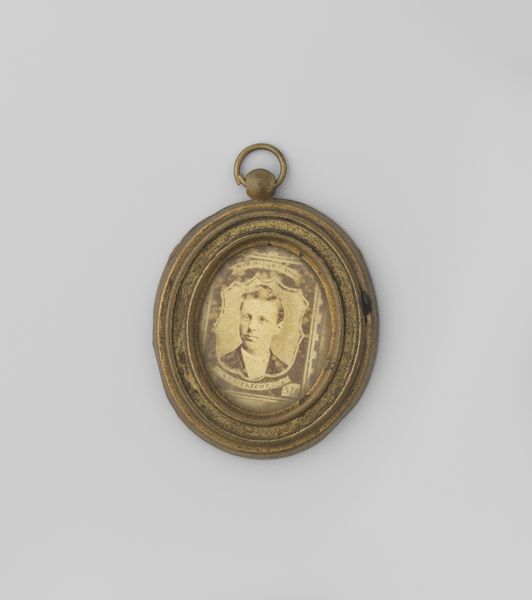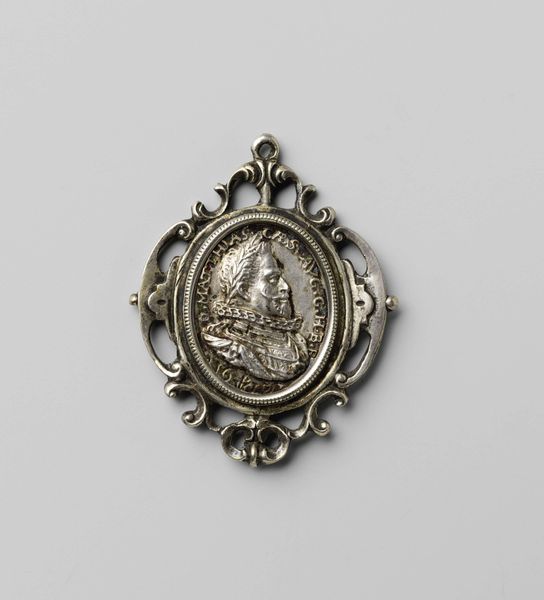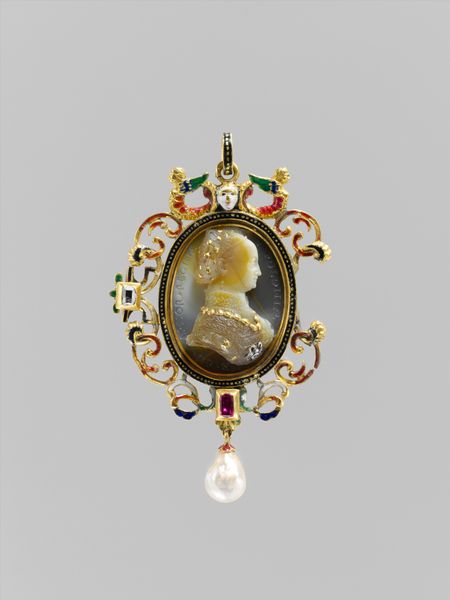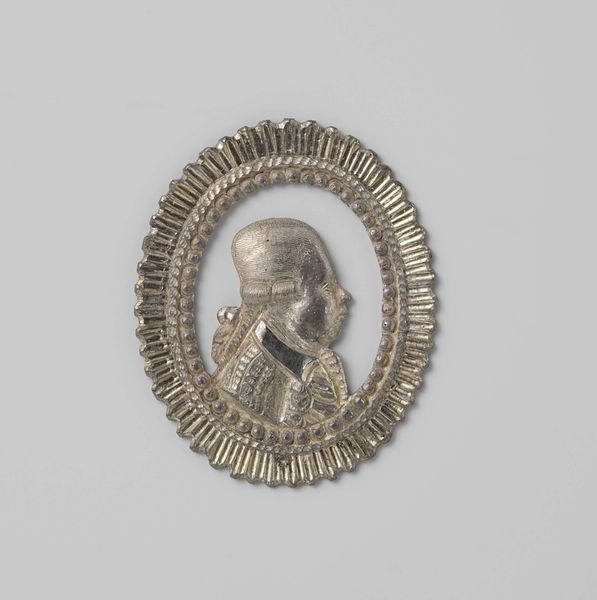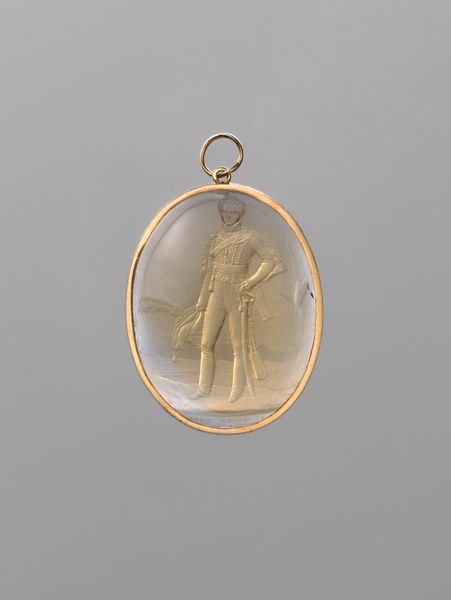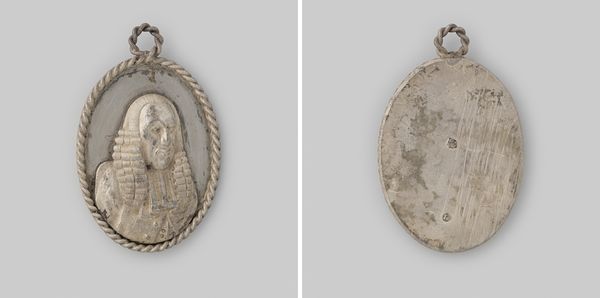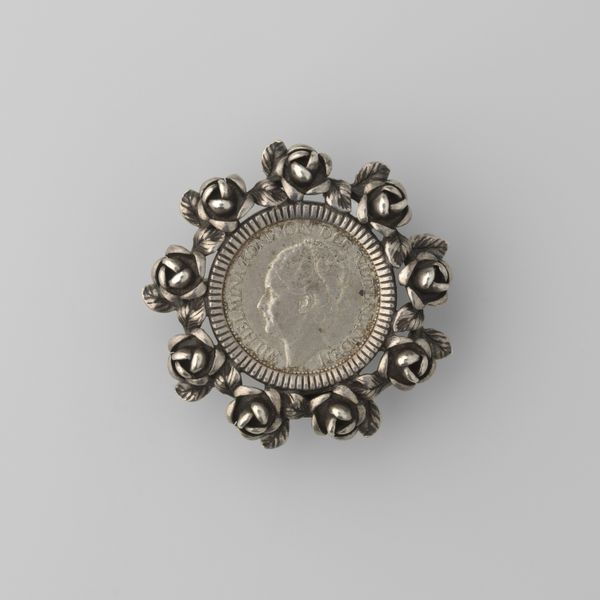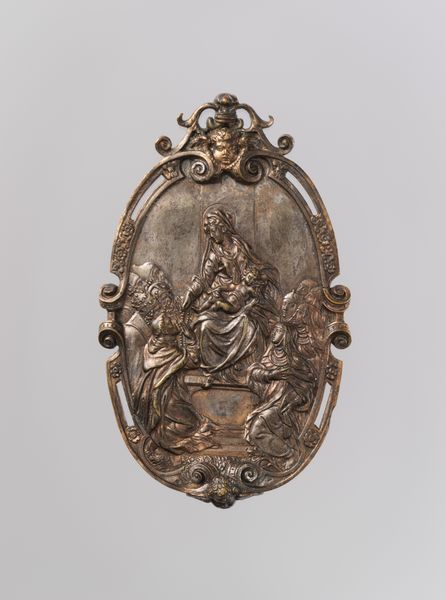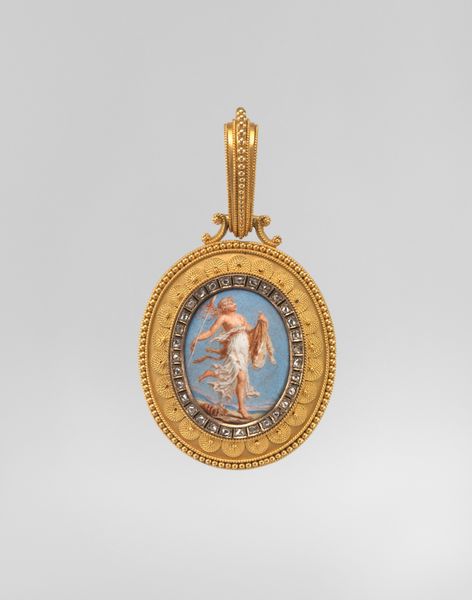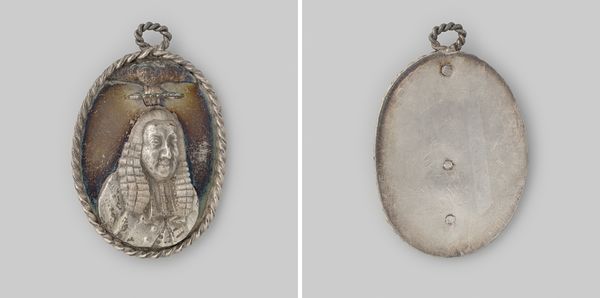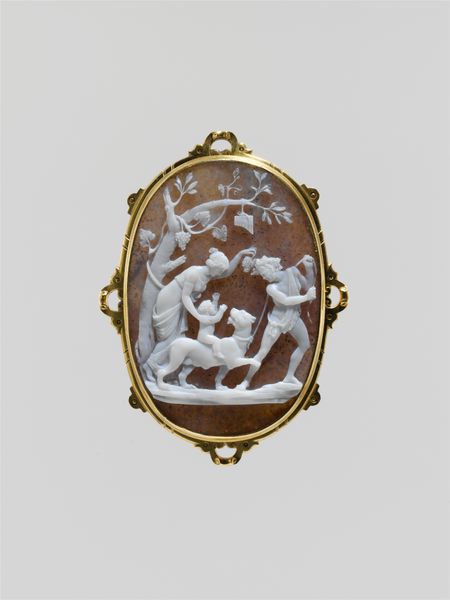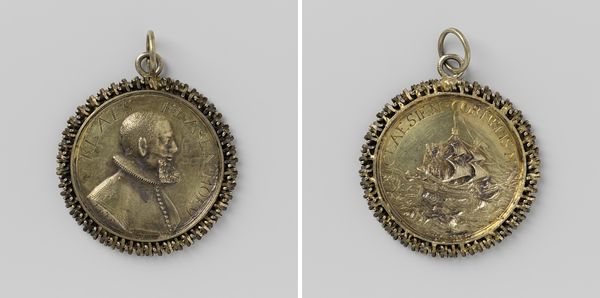
photography
#
portrait
#
still-life-photography
#
photography
#
child
Dimensions: height 50 mm, width 38 mm
Copyright: Rijks Museum: Open Domain
Curator: Let's discuss this piece titled "Portraits of Three Unknown Children" made sometime between 1862 and 1882. It is an early photographic portrait, currently housed at the Rijksmuseum. The work feels intensely personal yet distant because of its age and anonymous subjects. What strikes you most about it? Editor: It’s the framing, literally. The silver filigree setting enclosing these three tiny portraits gives it such a unique form. The triangular shape, how does that contribute to the overall feeling, do you think? Curator: Indeed, let’s consider the structure. The triptych arrangement is intriguing; observe how the oval portraits form an equilateral triangle, lending a sense of formal balance. Do you see any hierarchical relationship within the portrait composition? Editor: Well, the child at the apex feels more important or central because of the positioning. It draws the eye first and then downwards to the other two. Is it intended that the portraits are in a hierarchy? Curator: Perhaps. Now, observe the subjects. The limited grayscale palette emphasizes texture. Note how the subjects’ gazes intersect with ours, a visual triangulation mirrored by the outer structure. Does this formal repetition influence the viewer's interpretation? Editor: I think it invites me to consider each child's unique appearance but also their shared context. And looking at them, in the framing, it makes me wonder what the children were thinking or what the commissioner of this object was going to do with it. I would not have observed the pattern of gazes without you mentioning it. Curator: And that, precisely, is the beauty of formal analysis. We have moved beyond simple subject recognition towards decoding the internal mechanics of the piece. Editor: Thank you. I definitely understand a new way to look at photographic portraits and their formal design.
Comments
No comments
Be the first to comment and join the conversation on the ultimate creative platform.
